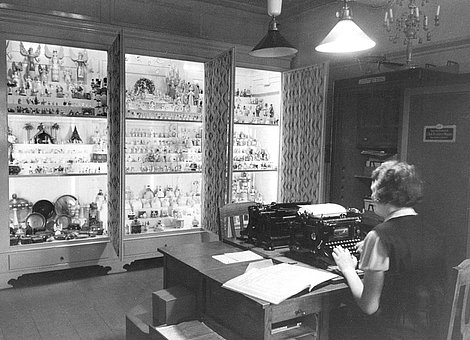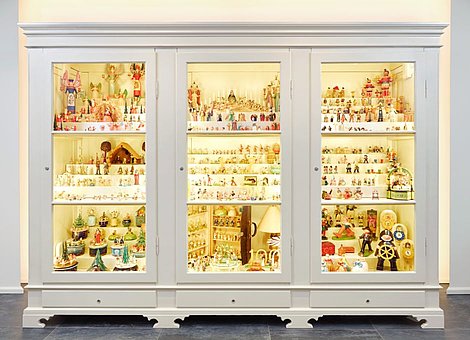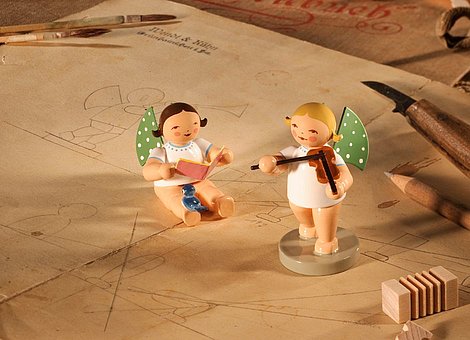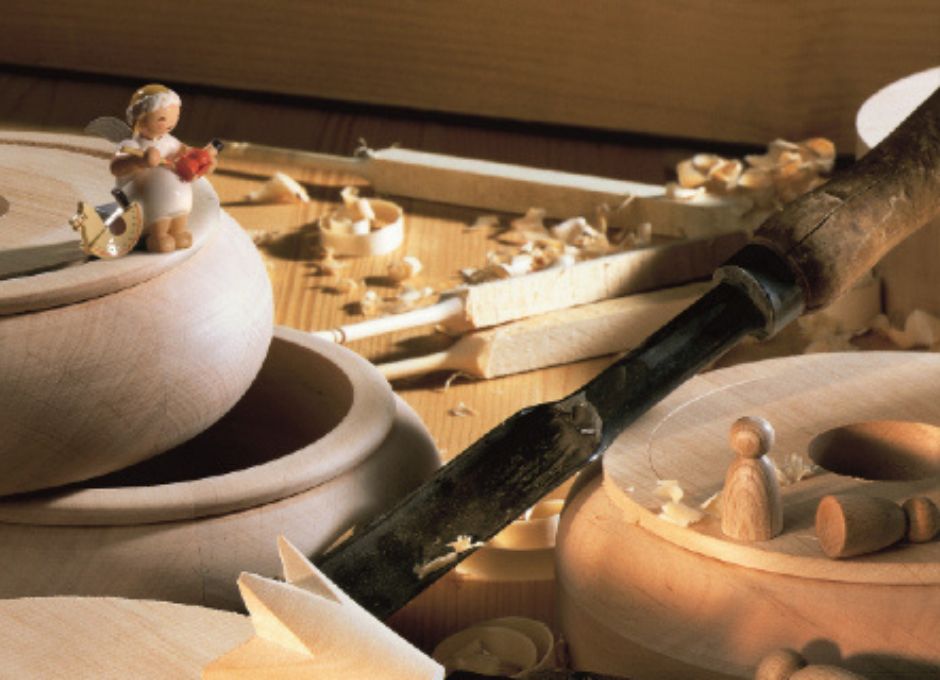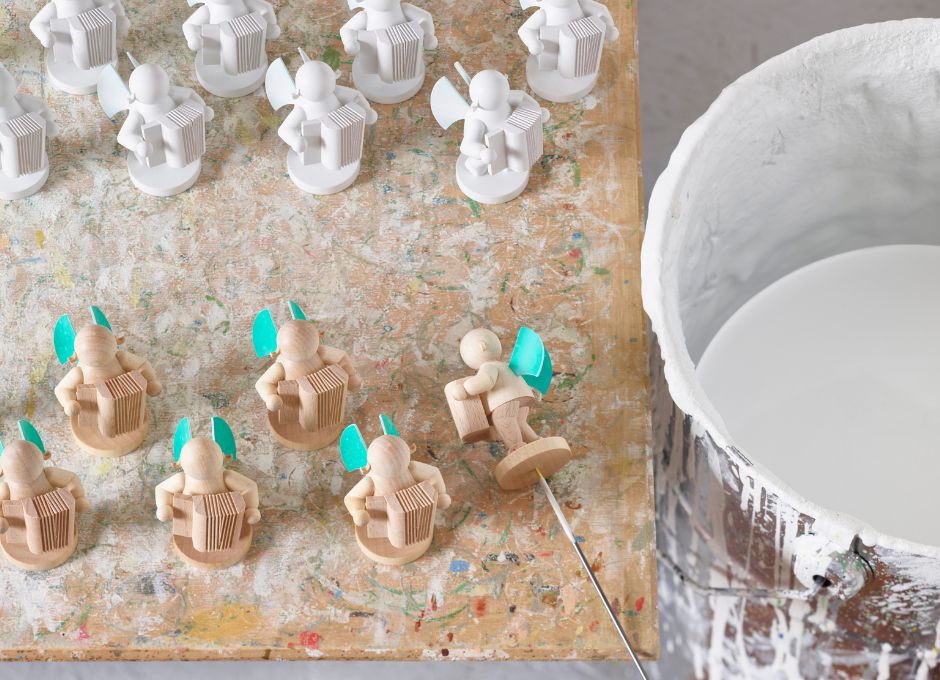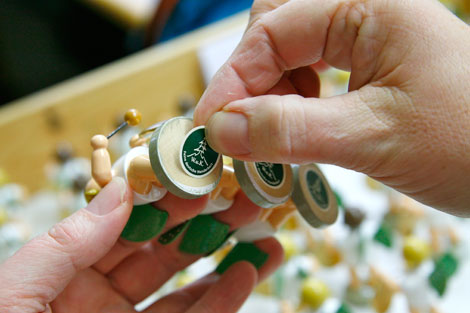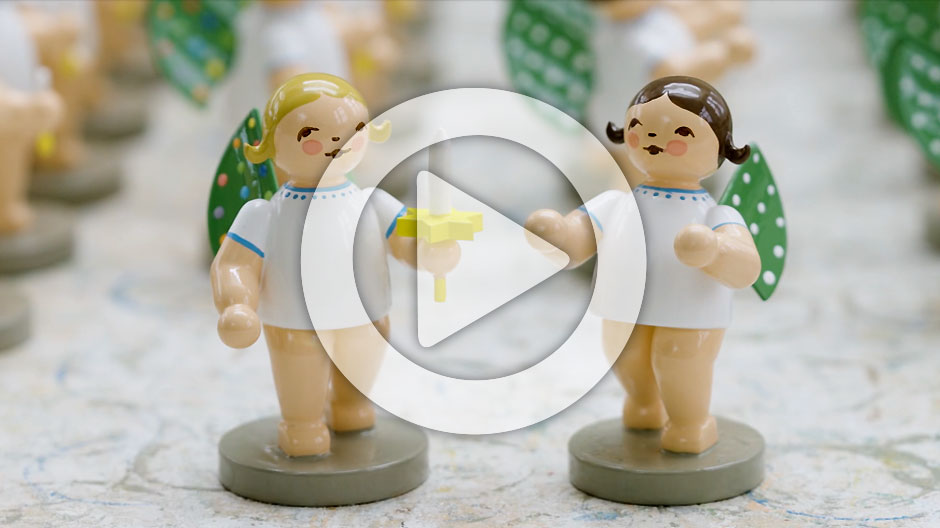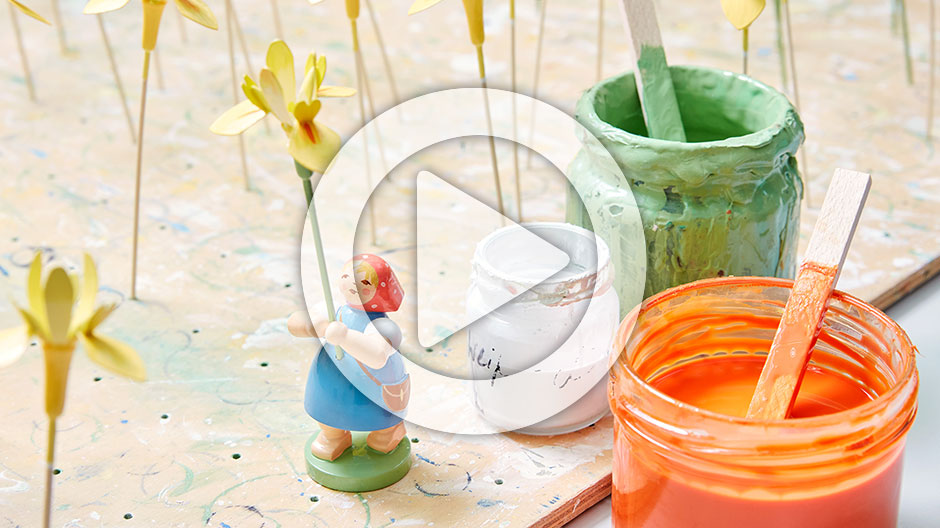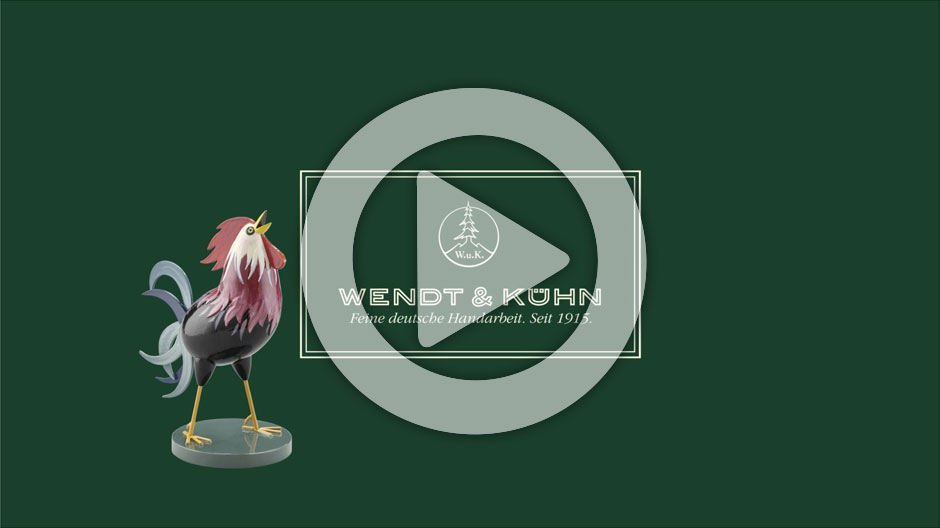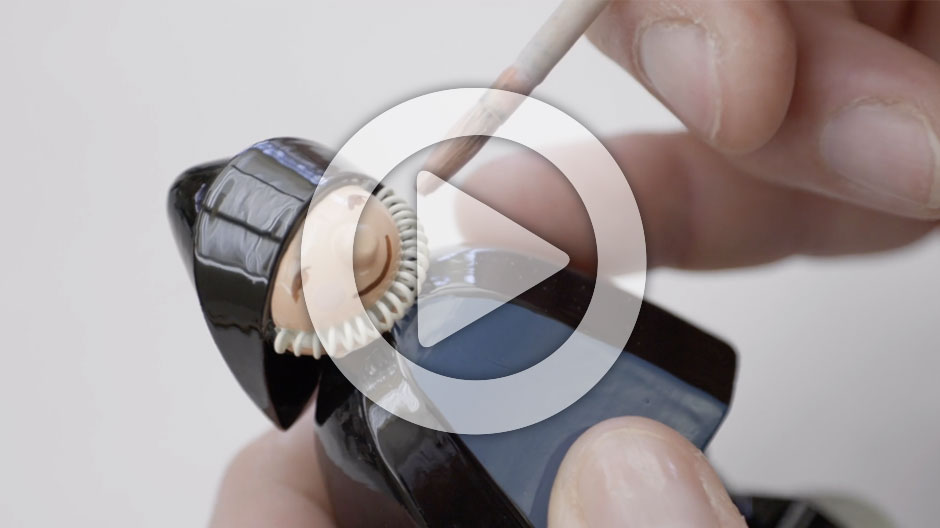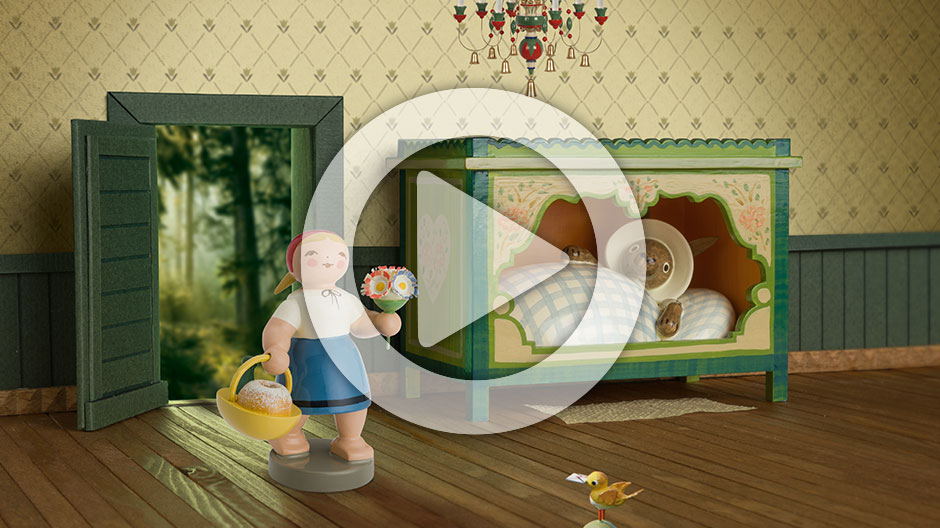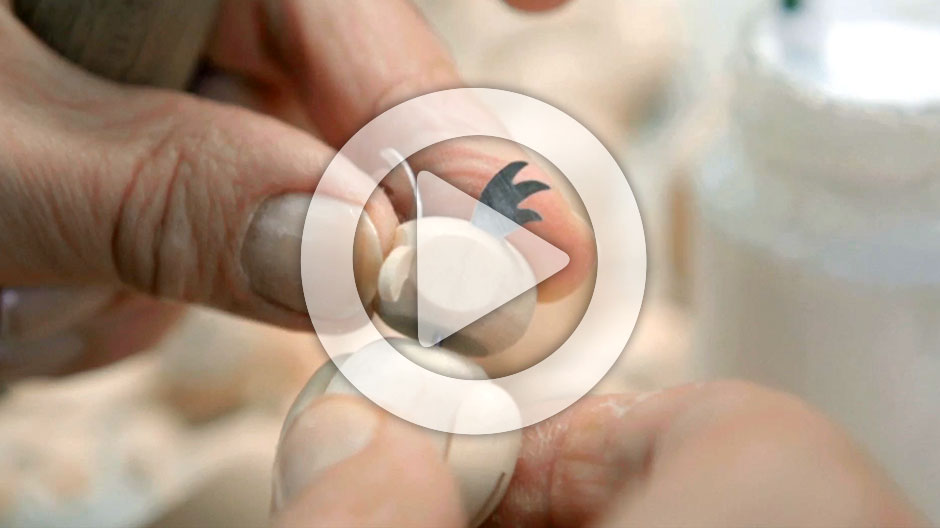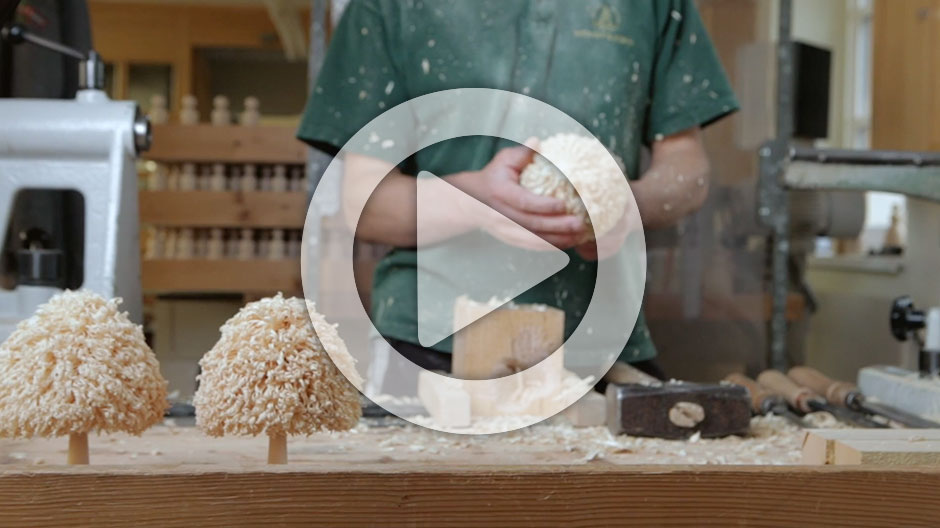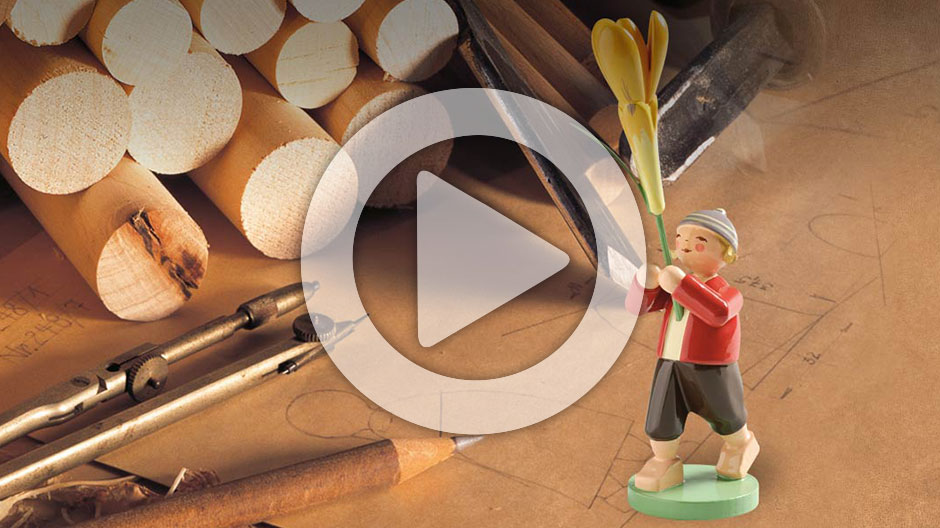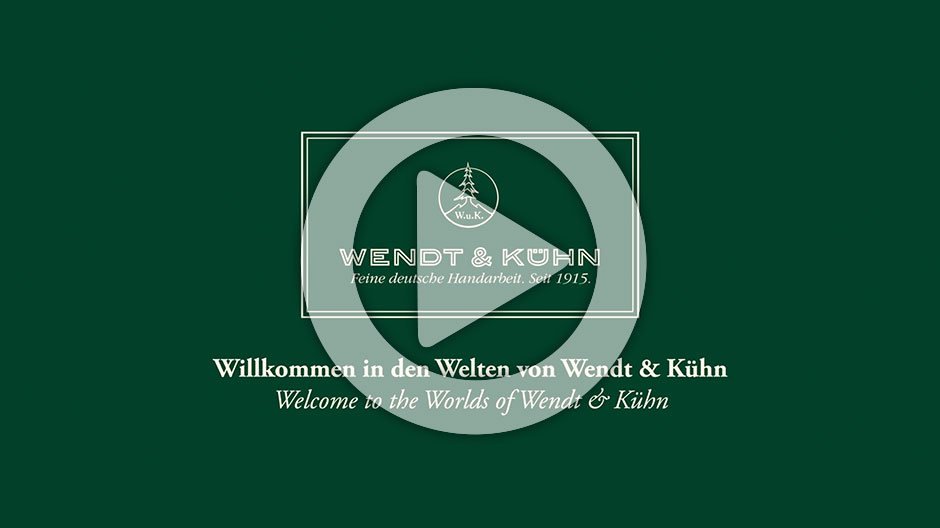
How exactly do these precious tiny creations from theWendt & Kühn workshops which have kindled such incomparable fascination come to be? Their origin lies in the rich treasure trove of artistic productivity with which the family-run company has been blessed, first from Grete Wendt and and then later Olly Wendt. It remains the basis for everything we produce – faithful to the originals – to this very day.
Historic designs
The origin of the current range of figurines and music boxes is a collection of more than 2,500 instantly recognizable original designs, patterns and drawings from the pens of designers Grete Wendt and Olly Wendt, née Sommer.
In faithfully reproducing them, we have retained the original shapes and colors of the figurines and music boxes. Through the passing on of this craftsmanship from generation to generation, each individual piece becomes a striking work of art that radiates charm, good taste, tradition and exclusivity.
Every year, we carefully select which figurines to remove from production for at least five years. They are then given an honored place in the Grand Sample Cabinet in the historic gallery of the 270-square-meter Wendt & Kühn World.
From timber store to wood turning shop
The genesis of our cheerful little figurines begins in the lumberyard of our Grünhainichen workshops. Here the logs that have been cut into boards are left to dry. It will be a good two years before they can be fashioned into square, flat or rounded profiles ready for further processing. The wood is then shaped on the lathe with a range of wood turning tools, curl by curl.
Under the skilled hands of the wood turners, the initial physical contours or rotationally symmetrical components emerge, ready to be cut, milled and sanded into their final form. But there are still many hours of meticulous handcrafting ahead before these simple figurative forms become fully-fledged compositions.
From gluing shop to dipping shop
Miniscule parts are often glued together. Still embryonic in nature, the Grünhainichen Angels®, for example, thereby slowly take form from body, instrument and wings. Before the figurines can be painted in such intricate detail, a coating of usually white primer is applied.
It all starts with an even light-colored base undercoat to give the paint which comes later a warm radiance. To ensure that the later paint layers will have just the right thickness, the figurines are placed onto needle-like rods after being dipped in their primer bath and twirled like whisks. This spins off any excess primer and the now uniformly even base coat is
left to harden.
Artistic painting
Along with their inspired figurative form, the childlike miniatures owe their exuberance to their masterly painting. Experienced hands painstakingly apply fine brush strokes to each figurine, accessory item and music box. The colors and the embellishments which bring these tiny beings to life were dictated decades ago in the original designs, which still serve as a guideline for our experienced painters today.
A small work of art has been created
The finishing touches: the skilled hands of the toymakers now carefully apply the final details to these masterpieces in miniature and mark the underside of each base with the initials “W. u. K.” to authenticate their origin.
The company’s logos have undergone only a few changes during the more than 100 years of its history. Sometimes for historical reasons, sometimes for artistic ones. We have put together for you a detailed overview of all the Wendt & Kühn logos.

